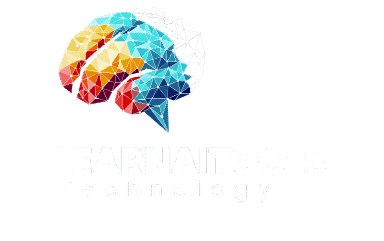
Close up of server hub specialist using artificial intelligence to reduce downtime. Computer scientist designs and implements AI driven solutions for data center equipment
In the rapidly evolving world of artificial intelligence, the ability to communicate effectively with AI systems has become a powerful skill. This is where Prompt Engineering for AI comes into play. It’s not just a technical concept—it’s a creative and strategic process that can significantly influence the accuracy, quality, and usefulness of AI-generated responses. As AI tools like ChatGPT, MidJourney, and Bard become part of daily workflows, mastering prompt engineering is becoming as essential as learning to use a search engine was a decade ago.
What is Prompt Engineering for AI?
At its core, Prompt Engineering for AI is the art and science of crafting precise, clear, and effective prompts to get the best possible results from an AI model. Prompts are the instructions you give to an AI, and their structure, wording, and context can make the difference between a vague, irrelevant output and a highly accurate, valuable answer.
For example, instead of simply typing, “Write an Instagram caption,” a skilled prompt engineer might say, “Write three witty Instagram captions about morning coffee for a young, travel-loving audience.” The second prompt gives the AI more context and guidance, leading to a better outcome.
Why Prompt Engineering for AI Matters
AI systems don’t “think” like humans—they rely on patterns in data. This means the quality of your output is directly linked to the clarity of your input. With Prompt Engineering for AI, you can:
- Save time by getting accurate responses faster
- Reduce the need for excessive revisions
- Tailor AI results to match specific styles, tones, or formats
- Unlock advanced features in AI tools that casual users might miss
In short, prompt engineering bridges the gap between human creativity and machine processing.
Key Principles of Prompt Engineering for AI
To excel in Prompt Engineering for AI, it helps to follow a few best practices:
- Be Clear and Specific – Vague prompts lead to vague answers. The more detail you include, the more relevant the output.
- Provide Context – Background details help AI understand the intent behind your request.
- Set the Format – Indicate if you want a list, an article, a table, or a social media caption.
- Experiment and Refine – Try multiple variations of a prompt to see which produces the best results.
- Use Constraints – Adding limits like word count, style, or tone helps narrow the AI’s focus.
Real-World Applications
Prompt Engineering for AI is not just for developers or tech experts—it’s transforming multiple industries:
- Marketing – Crafting engaging ad copy or social media content
- Education – Creating customized lesson plans or quizzes
- Design – Generating image concepts using AI art tools
- Business Analysis – Summarizing reports or generating presentations
- Creative Writing – Assisting in story ideas, scripts, and poetry
By mastering this skill, professionals can drastically improve productivity and creativity in their respective fields.
Common Mistakes to Avoid
While Prompt Engineering for AI is powerful, there are some pitfalls to watch out for:
- Using overly broad language
- Ignoring the need for examples in your prompt
- Forgetting to specify the tone or target audience
- Relying on one single prompt instead of iterating
Avoiding these mistakes ensures you maximize the benefits of prompt engineering.
The Future of Prompt Engineering
As AI systems grow more advanced, Prompt Engineering for AI will evolve from simple text instructions to more complex multi-modal prompts that combine text, images, and even audio. We can expect tools that help users build prompts visually or collaborate with AI in real-time for dynamic results.
Eventually, this skill could become a standard part of education and workplace training, much like computer literacy today.
Final Thoughts
Mastering Prompt Engineering for AI is like learning a new language—one that helps you speak directly to machines in a way they understand best. Whether you’re a marketer, teacher, entrepreneur, or creative artist, this skill can open doors to efficiency, innovation, and limitless creative potential. In a digital era driven by AI, prompt engineering is not just useful—it’s essential.



